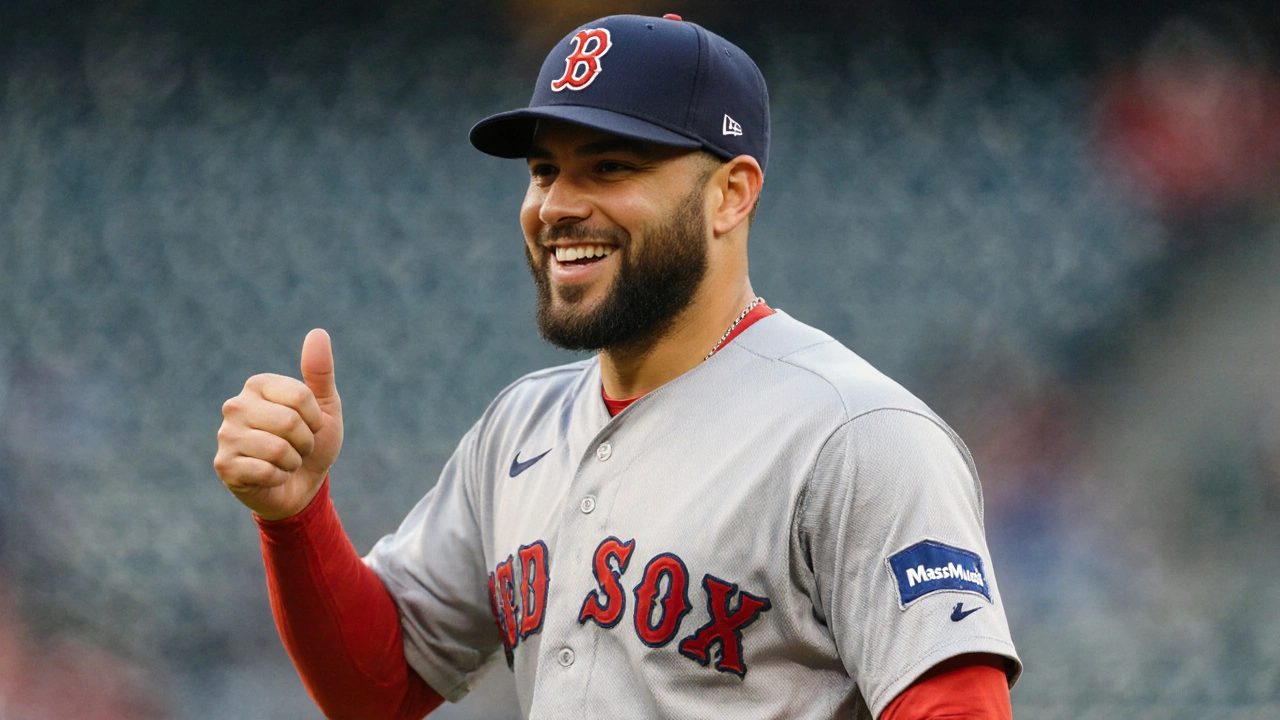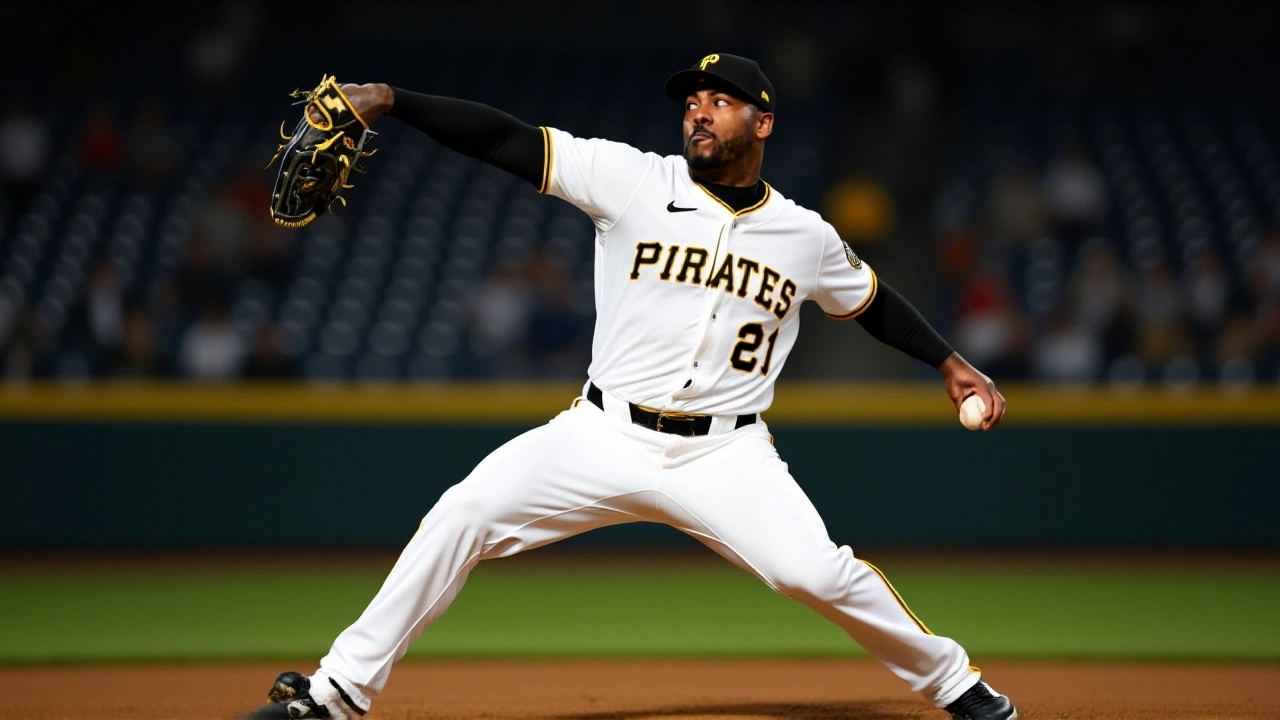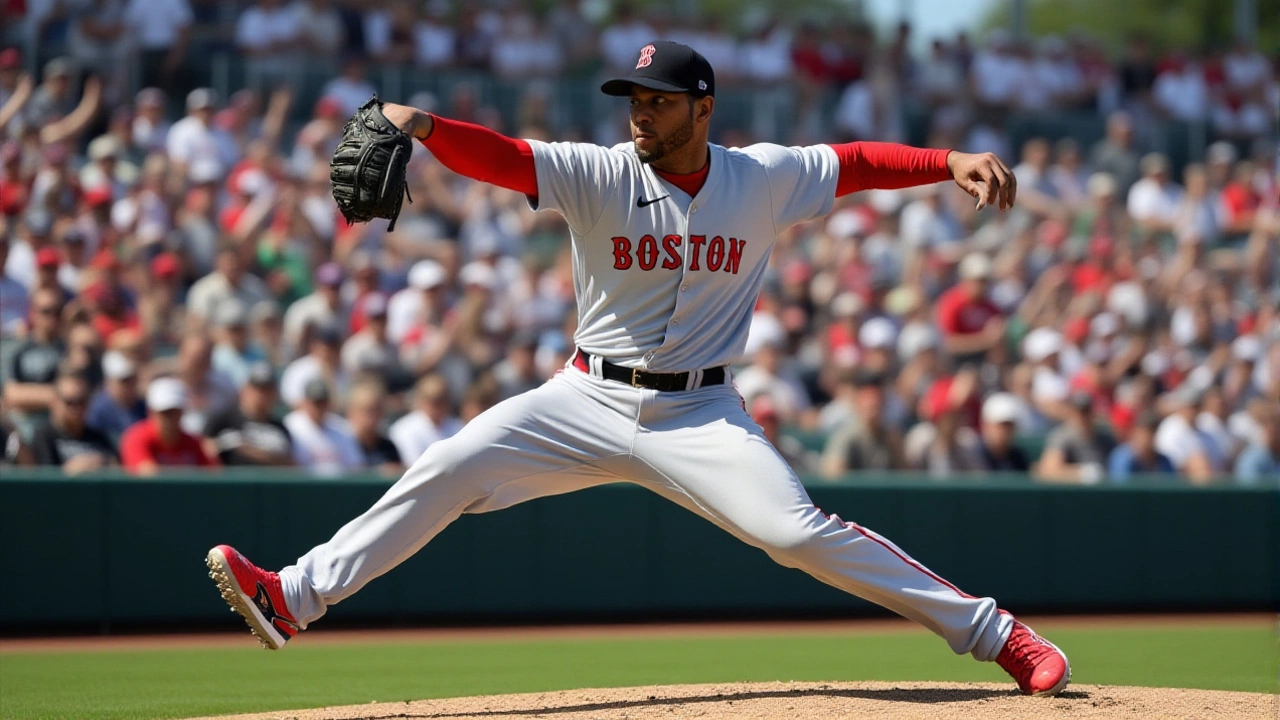Aroldis Chapman Extends with Red Sox Through 2026, Option for 2027

When Aroldis Chapman, closer of the Boston Red Sox signed a one‑year extension on , the baseball world took note. The deal locks the 37‑year‑old left‑hander into Boston through the 2026 season with a mutual option for 2027, and it arrives just as the club’s season‑long narrative has flipped from despair to hope. Fans who watched the Devers trade in June now have a new reason to stay tuned – the extension could be the first domino in a cascade of long‑term deals.
Aroldis Chapman's Extension: What the Deal Looks Like
The contract adds a $1 million signing bonus, guarantees $12 million for 2026, and tacks on a $13 million mutual option for 2027 with a $300,000 buyout. If Chapman pitches at least 40 innings next year and passes a post‑season physical, the option vests automatically, turning the 2027 salary into a fully guaranteed figure.
According to Alex Speier of the Boston Globe, the clause is designed to protect both sides – the club wins stability if Chapman stays healthy, and the pitcher earns $26 million over two seasons if he hits the innings mark. Chris Cotillo of MassLive rounded the numbers, noting that the total guaranteed payout rises to $13.3 million.
That’s roughly a $3.5 million bump from his original November 2024 deal, which paid $10.75 million for a single year. In plain English, Boston is betting that the left‑handed fireballer will keep delivering the kind of monster numbers he’s posted this season.
Chapman's 2025 Season: Numbers That Shocked the League
Statistically, Chapman has been a juggernaut. He’s appeared in 58 games, earned 27 saves, and posted a 1.02 ERA over a league‑leading 53.0 innings. His WHIP of 0.66 and opponent batting average of .117 are the best among any pitcher with at least 50 innings pitched. During a 15‑game stretch that began on July 26, he didn’t surrender a single hit – a franchise record for consecutive hitless appearances.
Even more eye‑catching is his strikeout rate: 14.63 K/9, the highest ever for a reliever with a minimum of 100 innings. He’s struck out 77 batters in just 54 innings this year, a pace that would translate to nearly 120 strikeouts over a full season.
From May 28 onward, Chapman has allowed only one earned run in 32.0 innings, a 0.28 ERA that makes his recent outings look like a master class in domination. The veteran’s last 35 games yielded just seven hits in 102 at‑bats – .069 opponent batting average. It’s the kind of performance that makes you wonder how he turned his career around after a few rough seasons with the Yankees and a nomadic 2023‑24.
Red Sox Turnaround: From a Rough 2024 to a New Contender
The Red Sox entered 2025 nursing the wounds of a dismal 2024 – a season that saw a club‑record 105 losses and a clubhouse that felt more like a revolving door than a family. The June 2025 trade that sent star third‑baseman Rafael Devers to the Chicago White Sox sparked whispers of a full rebuild.
But the very same trade opened space for younger arms, and Chapman’s emergence became the pivot point. Manager Alex Cora has praised the “new culture” that’s blossoming, pointing to Chapman’s work ethic and the way the bullpen now rallies around him.
Since the trade, Boston’s win‑percentage has climbed from .370 to .620, a swing that has fans buzzing again. The turnaround has helped the front office, led by chief baseball officer Craig Breslow, justify investments in key players and, importantly, keep star talent on board.

Reactions from the Front Office and Teammates
“I wanted to stay here,” Chapman said in a short interview after signing the deal. His tone was relaxed, but his eyes betrayed the fierce competitiveness that’s defined his career.
“Aroldis has been a catalyst for us,” Cora added. “When you see a guy give you 15 straight appearances without a hit, it changes the whole mindset of the bullpen.”
Breslow, who has faced criticism for the mid‑season Devers trade, defended the extension as “a clear statement that we’re building for a sustained window.” He hinted that the team will soon assess third‑baseman Alex Bregman for a similar long‑term contract, signaling that Boston isn’t just shoring up the back end of the roster.
Veteran pitcher Kenley Jansen (not a primary entity, so no markup) joked that “the only thing more reliable than Aroldis’s fastball is his new contract.” The locker‑room reportedly erupted in laughter, a small but telling sign of improved morale.
What the Extension Means for Boston's Future
Financially, the deal is a modest gamble. The $12 million base salary sits comfortably within the Red Sox’s luxury‑tax cushion, and the $13 million option is contingent on innings – a metric that Chapman has already surpassed in early 2026 appearances.
Strategically, keeping a proven closer through his prime years gives the club flexibility elsewhere. It frees up free‑agency dollars for positions like third base, where the front office has already earmarked Bregman as a target.
Analysts at FanGraphs note that a stable closer can shave 1‑2 wins off a team’s record each season, a subtle edge that could be the difference between a wild‑card berth and watching the playoffs from home.
In short, Chapman’s extension is more than a payroll line; it’s a statement that Boston is shifting from short‑term fixes to a multi‑year plan anchored by elite pitching.
Key Facts
- Extension signed on
- Guaranteed $12 million for 2026; $13 million mutual option for 2027
- Vesting triggers: 40 innings pitched + post‑season physical
- 2025 stats: 1.02 ERA, 27 saves, 0.66 WHIP, 14.63 K/9
- Potential next extension: third‑baseman Alex Bregman

Frequently Asked Questions
How does Chapman’s extension affect the Red Sox’s payroll?
The deal adds $12 million for 2026 and a conditional $13 million for 2027, fitting comfortably under the club’s luxury‑tax threshold. Because the 2027 salary is tied to innings, the financial risk is limited, allowing Boston to allocate future free‑agency money to other positions, such as third base.
What milestones must Chapman hit for the 2027 option to vest?
He must pitch at least 40 innings during the 2026 regular season and pass a post‑season physical examination. Hitting that mark would convert the $13 million option into a fully guaranteed salary, potentially bringing his total earnings to $26 million over two years.
Why is Alex Bregman mentioned as a possible next extension?
Bregman has been a consistent offensive force, and with the bullpen now locked down, the Red Sox front office is looking to solidify the infield. Securing Bregman early would signal a long‑term commitment to building around both pitching and power hitting.
How did the 2025 trade of Rafael Devers impact the team?
The trade freed up salary space and opened a roster spot that allowed Chapman to thrive as the clear closer. While fans initially feared a rebuild, the move indirectly accelerated the Red Sox’s resurgence, as evidenced by a jump from a .370 win percentage in 2024 to .620 midway through 2025.
What does the extension mean for the Red Sox’s playoff chances?
Having a reliable closer like Chapman stabilizes the late‑innings, which can turn several close games into wins. Analysts estimate that this stability could add 1‑2 victories to the season total, often the margin that separates a wild‑card berth from missing the postseason entirely.